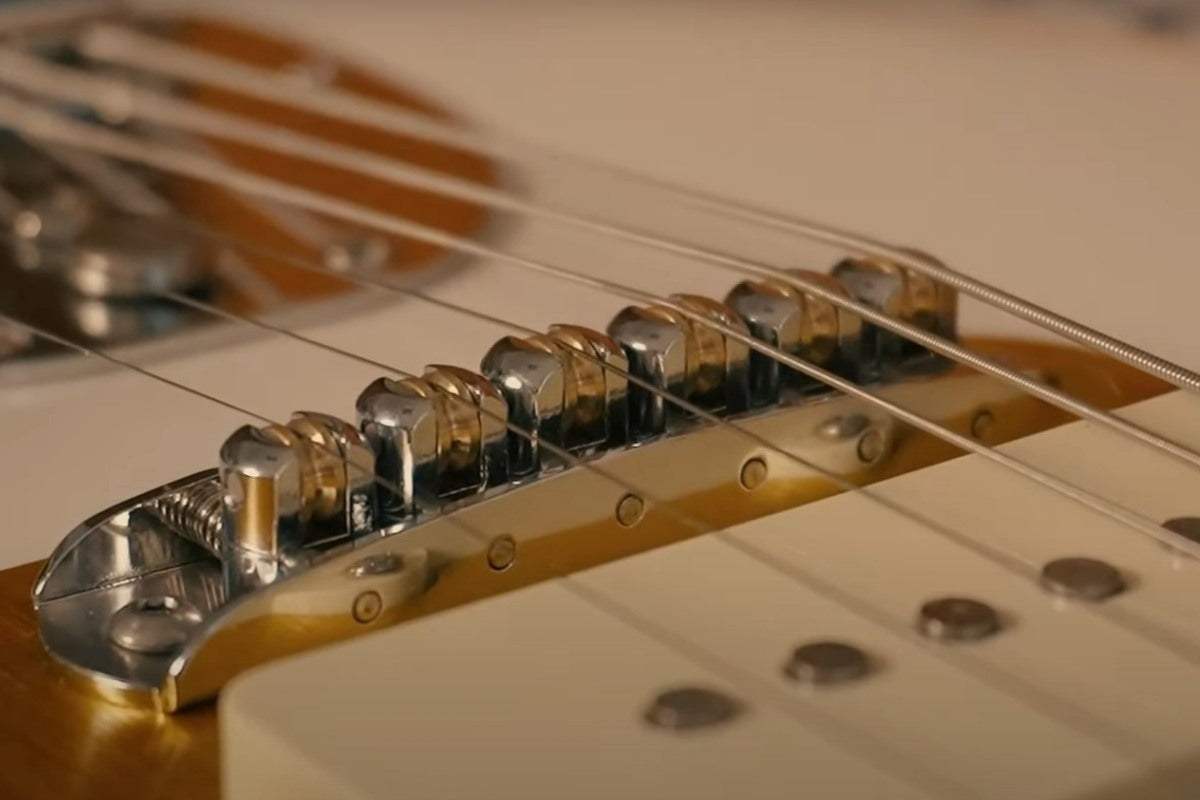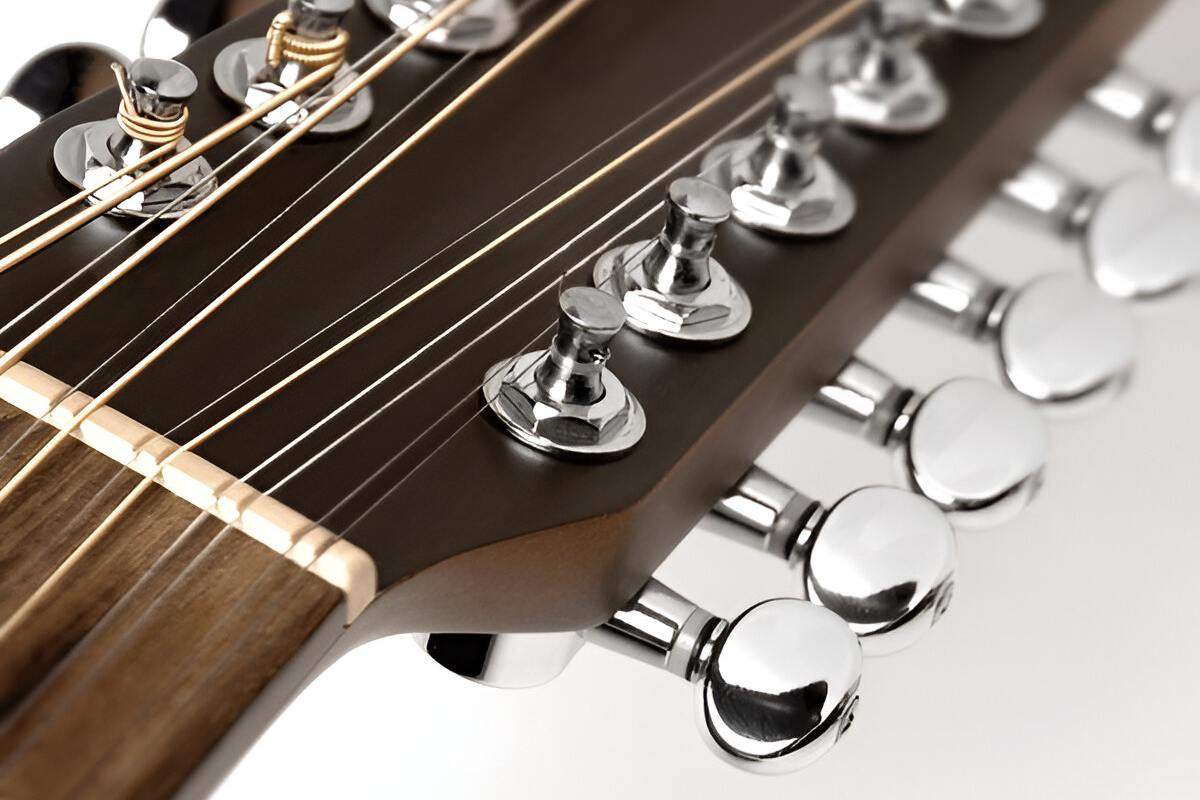Guitar maintenance is the number one way to keep your guitar rocking and always sounding at its best. You might not even think about it that much. Still, faulty electric or acoustic guitar maintenance might even shorten your instrument’s life.
These are the best habits you can follow daily, quarterly, bi-yearly, yearly, and long-term. Plus, stay until the end because I added a bonus track you won’t want to miss.
There you go, 25 years of guitar playing and touring taking care of my guitars, poured in a single post. This is your one-stop solution for guitar maintenance.
Everyday/Every Gig Habits
“Quality is not an act; it is a habit.” This line belongs to no other than Aristotle himself. Although he didn’t mean it about electric guitar maintenance, he’s got a point. If you’re serious and consistent in your guitar or bass guitar maintenance habits, you’ll prolong its quality and usable lifespan.
These are habits for every day or after every gig.
1. String Wipe
Every guitar maintenance kit comes with a cloth. Some come with a regular one while the best guitar maintenance kits come with a microfiber one. Regardless of what you use to clean your strings, you should do it every time you play your guitar.
The grime, dust, dead skin (I know, yikes!), and oil your skin leaves on your strings can make them rusty and dead-sounding much faster.
So, keep a garment (even if it’s an old cotton t-shirt) inside the gig bag or case and just wipe the strings with it every time you play your guitar.

2. Hardware Cleaning
Yes, your guitar’s hardware is, most likely, made of metal just like your strings. Well, along with your guitar maintenance accessories, you should have a dry, microfiber cloth for your hardware. Furthermore, if you play in extremely hot weather and you sweat profusely, pay special attention to every corner moisture might go.
If you’re serious about guitar maintenance and repair, you must keep the hardware clean and dry before storing the guitar.
3. Wash Your Hands!
Even if you never read a guitar maintenance book in PDF, set up a guitar maintenance bench, or ever do guitar repairs at all, this advice is a must for all players. Yes, washing your hands before picking up the instrument avoids most of the grime, grease, dust, oil, and who knows what else from sticking to your strings or the rest of the instrument.
So, as a daily habit, every time you’re picking up a guitar, you must religiously wash your hands. Believe me, once the habit’s grown in you, you won’t even notice.
Quarterly/Bi-yearly Habits
Although daily basic guitar maintenance can take you far, there are some minor adjustments you need to make monthly, quarterly, or bi-yearly, depending on how often you play.
These should be included in what you’d call the budget for guitar maintenance costs. Investing regularly in your instrument might save you from investing large sums when it’s already too late.
4. Avoid Rusty Strings
Putting fresh strings on your guitar should be something you do very often. Furthermore, consider the price of the new set of strings as part of your guitar maintenance budget. Yes, string changes every month or so are one of the easiest DIY guitar maintenance hacks you can learn.
Rusty strings aren’t just uncomfortable to play or bad looking on stage, they can damage other metal parts of your guitar like saddles, bridges, frets, pickups, and more.
So, when you think about how much guitar maintenance costs, consider 8 to 12 guitar string packs per year as your guitar maintenance essentials.

5. Fretboard Maintenance is a Must
Even a low-maintenance electric guitar like a Telecaster (no tremolo, no fancy cavities, no fragile neck) needs fretboard maintenance. What does guitar fretboard maintenance mean? Well, not only guitar fret maintenance but also the oiling and preservation of the fretboard itself.
As you might know, the wood the guitar is made of never stops being an organic element, susceptible to its surroundings. So, if you live in a dry area and don’t oil your fretboard often, you’re exposing it to cracks and other much bigger problems.
Do this every time you change the strings, just oil up the board and softly pass the cloth on top until it absorbs the liquid.
Finally, lemon oil and a soft cloth along with a fret polisher and a non-abrasive sandpaper should be part of your guitar maintenance equipment. Remember, fretboard maintenance for the guitar is essential to keep it rocking and rolling.
6. Setup & Intonation
OK, so, this is not as easy as the other steps on this list, but any guitar maintenance guide includes a guitar setup guide. Yes, adjusting string height and intonation is paramount to feeling at home with your instrument.
How many times has it happened to you that someone hands you their instrument and it feels either totally unplayable or like butter? Well, setup and intonation, from a player’s perspective are just as important as changing the strings.
Learning how to do guitar maintenance to perform these minor tasks is an option. The other is to have a trusty guitar technician to do some proper guitar maintenance on your axes often.

Annually/Long-Term Habits
Besides doing the usual minor maintenance and learning how to clean guitar finishes properly or keep a high-maintenance guitar (like guitars with complex electronics or tremolo systems), some habits only happen yearly. Moreover, they should be adopted for the long-term welfare of your instrument.
So, we’re not here to teach you how to service a guitar (not even a low-maintenance guitar) but to tell you what the correct steps are to perform permanent maintenance on your guitar.
7. Guitar Storage
Where and how your guitar spends most of its time is something that should be analyzed and chosen. The best option is always to have it inside its hardshell case with humidity control. That said, not every guitar comes with a case, and keeping it closed and out of sight is always an invitation to play less.
My suggestion is to measure the humidity of the room where you store your guitars. Believe me, humidifiers and de-humidifiers aren’t expensive apparatuses.
Nothing beats the comfort of having your favorite guitar sounding and playing gloriously and always handy.

8. Dust Check & Pickup Clean Up
Another great way to reduce guitar repair costs is to keep guitar electronics working perfectly. For that, you need to do two things.
• If your guitar comes with a hardshell case or a gig bag, keep it inside. This prevents dust and other flying particles from getting inside your pots and electronics. If it doesn’t, make sure you keep WD-40 close and use it frequently to dissolve any grime.
• Clean the pickups at least yearly. This is something not many people think about, but the pickups are the soul of the electric guitar, if they don’t work your gig is ruined. So, use a dry microfiber and keep them always dry and clean.

9. Professional Setup
Besides doing the kind of guitar repairs we don’t dare to do (like fixing a broken neck), luthiers and technicians perform outstanding guitar setups.
This means that, despite your maintenance efforts and checking setup and intonation often, at least once a year, your guitar should be checked by a professional.
So, when the question “How often should I get my guitar serviced?” pops up again, the correct answer is “At least once a year.”
10. Bonus Track: Keep your Guitar in Tune!
Even the most affordable, low-maintenance acoustic guitar can have tuning stability if it’s properly set up. Well, to enhance that effect, and to allow strings to settle in the correct tension, always keep your guitar in tune.
What I do is tune it before I put it away. Yes, every time I play any of my guitars and I’m about to put it down, I tune it to what it should be. For example, my Baby Taylor lives in open G tuning and when you want to play it in standard, the 6th, 5th, and 1st strings tend to move down to what they usually are (open G is DGDGBD).
If you always keep it in tune with standard tuning, the guitar will tend to be more stable in standard tuning.
How to Take Care of Your Guitar on The Road?
All the tips above are great if you’re at home surrounded by your precious collection, but what about taking it on the road? Well, the road demands a different approach.
Here are three tips I learned in 20 years of touring.
• Take out your guitar first – Guitars suffer temperature and humidity changes. When you arrive at the venue, take out the guitars first and let them acclimate to the current scenario.
• Always go for the hard case – I know, carrying a hard case on the road is bulky, uncool, and uncomfortable. It is also the best way to take your guitar; so, if you have the chance, always go for the hard case.
• Keep it on sight – This is not a guitar maintenance tip, and, at the same time, it is perhaps the most important guitar maintenance tip: always know where your guitar is. Crowded backstages can make guitars go into the Twilight Zone. You can’t perform maintenance on a guitar you no longer have.
The Bottom End
Guitar care and maintenance are a must for guitar players who want to always have their guitars at their best. These little habits will help you prevent any repairs or bigger issues you might have with your instrument soon.
You can either teach yourself guitar repair and maintenance, buy a guitar maintenance mat, and turn into a technician, or create a guitar maintenance checklist with the ten points above and follow it every year.
I assure you, there’s no better way to show love for your guitar than taking proper care of it daily.
Happy (in tune, intonated, and properly set up) playing!
If you like this article, please share it!
Be sure to join our FB Group Guyker Guitar Parts VIP Group to share your ideas! You can also have connections with like-minded guitar players, Guyker updates as well as discounts information from our FB Group.





